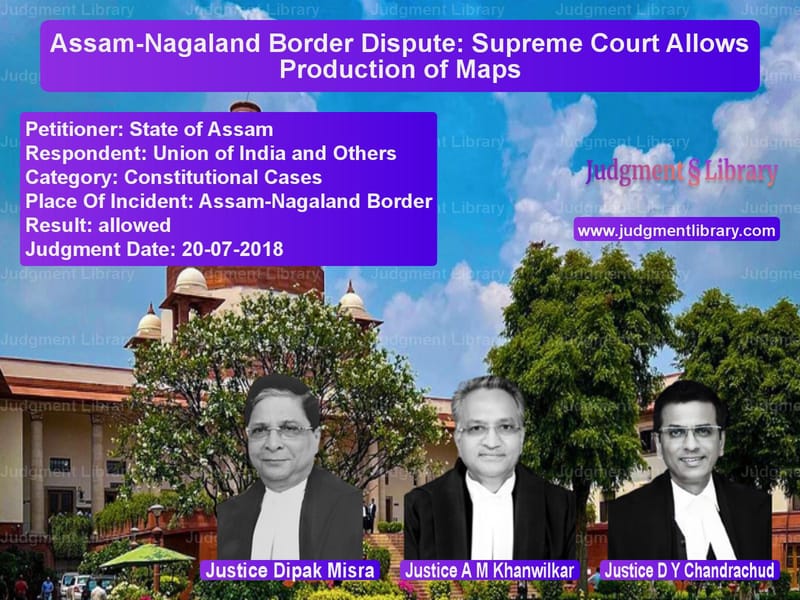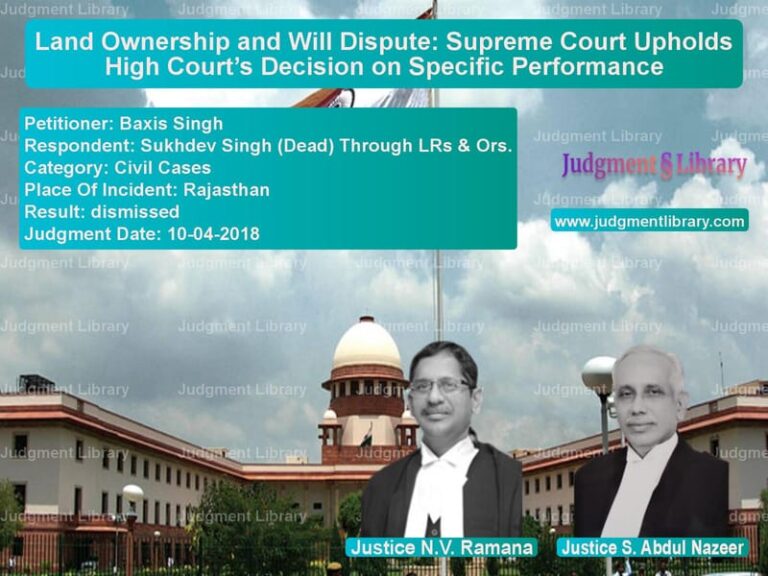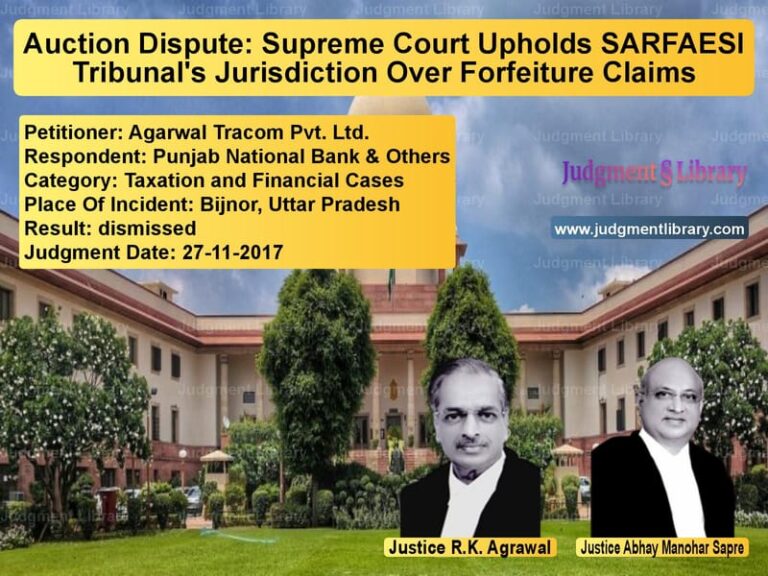Assam-Nagaland Border Dispute: Supreme Court Allows Production of Maps
The long-standing border dispute between the states of Assam and Nagaland was once again brought before the Supreme Court of India in a civil suit filed by the State of Assam against the Union of India and others. The dispute revolved around the demarcation of territorial boundaries, with Assam seeking the production of additional maps from the Survey of India to support its claims. The case primarily involved procedural aspects of document production under the Code of Civil Procedure, 1908.
Background of the Case
The dispute between Assam and Nagaland over territorial boundaries has persisted for decades. Assam, in its suit before the Supreme Court, sought clarity on the demarcation based on official records and topographical maps. During the recording of evidence, Assam attempted to introduce additional maps maintained by the Survey of India, which led to objections from the State of Nagaland.
The core issue before the Court was whether these maps could be produced at the current stage of proceedings, despite objections raised by Nagaland. Assam contended that the maps were crucial for its case and had not been in its possession earlier.
Legal Issues Before the Supreme Court
- Whether the State of Assam could introduce additional topographical maps at the evidence stage.
- Whether the maps sought to be produced fell within the scope of Order XI Rule 14 and Order VII Rule 14 of the Code of Civil Procedure (CPC), 1908.
- Whether permitting the production of these maps would prejudice the interests of the State of Nagaland.
Arguments by the Petitioner (State of Assam)
Assam contended that the maps it sought to introduce were official records maintained at the Head Office of the Survey of India in Dehradun and were not within its possession or control. It argued that the production of these maps was essential for accurately determining the territorial boundaries.
The petitioner submitted the following key points:
- The maps were official government documents and would aid the Court in arriving at a just decision.
- The State had previously attempted to produce relevant maps but later realized that additional documents were necessary to substantiate its claim.
- Since the maps were not in its possession, the previous order of the Court should not preclude their production.
Arguments by the Respondents (State of Nagaland)
Nagaland opposed Assam’s plea on several grounds. The primary contention was that Assam had already been granted permission to submit specific documents, and allowing additional maps at this stage would be procedurally improper.
The respondents argued:
- Assam had ample opportunity to present its evidence, and introducing new maps now would amount to an unfair advantage.
- The admissibility and relevance of the documents were questionable.
- The procedural rules under CPC did not permit the introduction of new documents at this stage without due justification.
Supreme Court’s Analysis and Ruling
The Supreme Court analyzed the objections raised by Nagaland in light of the provisions under the CPC. The Court noted that Order XI Rule 14 allows a party to produce additional documents if they are relevant to the matter in question. It further observed that Order VII Rule 14 permits the introduction of documents not in the possession of a party at the time of filing the suit.
The Court made the following observations:
- “Having heard learned counsel and upon evaluating the objection of the State of Nagaland, we see no reason to disallow the production of the maps.”
- “The evidence of PW 9 is being recorded. Production of the above documents by the witness for the Survey of India should, in our view, be allowed in the interest of justice.”
- “The documents were not in the possession of the applicant, and the earlier order of this Court will not preclude the State of Assam from seeking production at this stage.”
- “We, however, clarify that we have not dealt with the relevance or admissibility of the documents. It would be open to the State of Nagaland to raise such objections as it is advised to raise and all appropriate defences.”
Final Judgment
The Supreme Court ruled in favor of Assam, allowing the production of the maps. However, the Court clarified that the ruling did not determine the relevance or admissibility of the documents. Nagaland retained the right to challenge the maps’ relevance in subsequent proceedings.
In its final order, the Court stated:
“Subject to what has been stated above, the application for production is allowed. The Interlocutory Application shall accordingly stand disposed of.”
Implications of the Judgment
The judgment reaffirmed the principle that procedural rules should not be used to obstruct the administration of justice. It set a precedent that where documents are official records and not in the possession of a party at the outset, they may still be introduced if they are relevant and necessary for adjudication.
Conclusion
The Assam-Nagaland border dispute remains a complex legal and territorial issue. While this ruling allows Assam to introduce additional maps, the larger question of boundary demarcation remains unresolved. The Supreme Court’s decision ensures that procedural technicalities do not hinder the search for truth, but the final resolution of the dispute will depend on further proceedings and substantive arguments on the maps’ relevance.
With both states holding firm positions, the case is likely to have significant implications for inter-state boundary disputes in India.
Petitioner Name: State of Assam.Respondent Name: Union of India and Others.Judgment By: Justice Dipak Misra, Justice A M Khanwilkar, Justice D Y Chandrachud.Place Of Incident: Assam-Nagaland Border.Judgment Date: 20-07-2018.
Don’t miss out on the full details! Download the complete judgment in PDF format below and gain valuable insights instantly!
Download Judgment: State of Assam vs Union of India and O Supreme Court of India Judgment Dated 20-07-2018.pdf
Direct Downlaod Judgment: Direct downlaod this Judgment
See all petitions in Legislative Powers
See all petitions in Constitution Interpretation
See all petitions in Public Interest Litigation
See all petitions in Judgment by Dipak Misra
See all petitions in Judgment by A M Khanwilkar
See all petitions in Judgment by Dhananjaya Y Chandrachud
See all petitions in allowed
See all petitions in supreme court of India judgments July 2018
See all petitions in 2018 judgments
See all posts in Constitutional Cases Category
See all allowed petitions in Constitutional Cases Category
See all Dismissed petitions in Constitutional Cases Category
See all partially allowed petitions in Constitutional Cases Category







